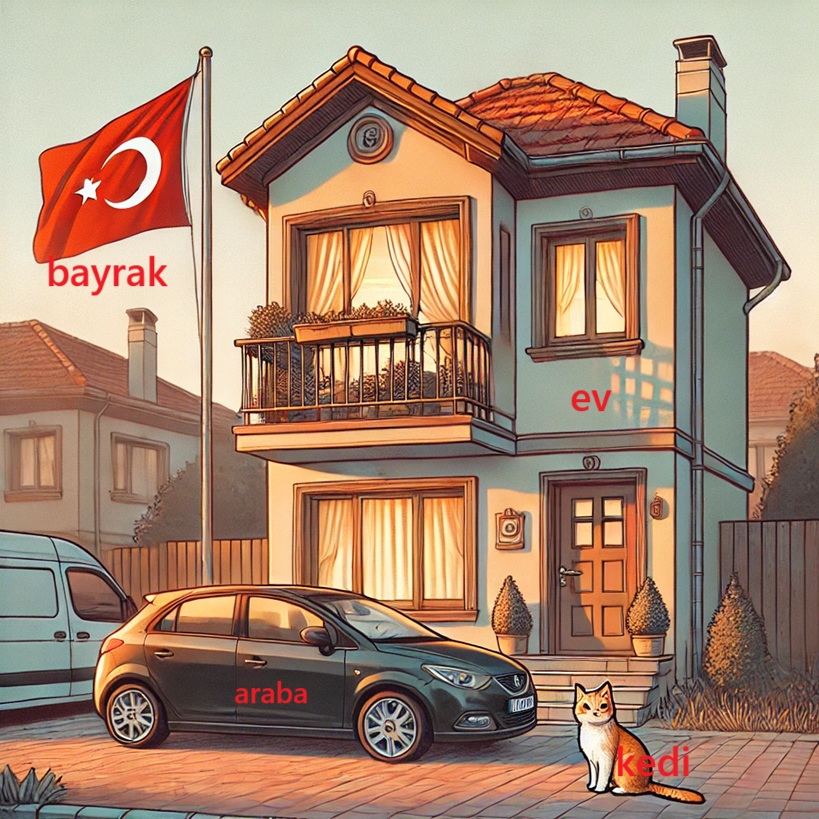Lesson1-Section4 (Turkish Vowel Harmony)
What is vocal harmony in Turkish?
Turkish Vowel Harmony
In Turkish, vowels are divided into two main groups: back vowels and front vowels.
Major Vowel Harmony (Büyük Ünlü Uyumu)
Back vowels: a, ı, o, u
Front vowels: e, i, ö, ü
The rule is simple: If the last vowel of a word is a back vowel, the suffix must also contain a back vowel. If the last vowel of a word is a front vowel, the suffix must contain a front vowel.
Minor Vowel Harmony (Küçük Ünlü Uyumu)
This rule applies to some specific suffixes, where the vowels in the suffix must harmonize based on whether the vowels are rounded or unrounded.
Rounded vowels: o, ö, u, ü
Unrounded vowels: a, e, ı, i
Examples
1) Kapı kapalı. (The door is closed.)
Question: Kapı kapalı mı? (Is the door closed?)
Why “mı”? The last vowel in “kapalı” is ı, a back vowel, so we use “mı”.
2) Pencere açık. (The window is open.)
Question: Pencere açık mı? (Is the window open?)
Why “mı”? The last vowel in “açık” is ı, a back vowel, so we use “mı”.
3) Şişe dolu. (The bottle is full.)
Question: Şişe dolu mu? (Is the bottle full?)
Why “mu”? The last vowel in “dolu” is u, a back vowel, so we use “mu”.

araba = Car ,Auto
kedi = Cat ,Katze
bayrak = Flag,Flagge
Table of Suffix Changes Based on Vowel Harmony
| Word (Last Vowel) | Suffix (Plural) | Suffix (Question) | Explanation |
|---|---|---|---|
| Ev (e) | Evler | Ev mi? | “Ev” ends with the front vowel “e”, so we use “-ler” for plural and “mi” for questions. |
| Kapı (ı) | Kapılar | Kapı mı? | “Kapı” ends with the back vowel “ı”, so we use “-lar” for plural and “mı” for questions. |
| Çanta (a) | Çantalar | Çanta mı? | “Çanta” ends with the back vowel “a”, so we use “-lar” for plural and “mı” for questions. |
| Şişe (e) | Şişeler | Şişe mi? | “Şişe” ends with the front vowel “e”, so we use “-ler” for plural and “mi” for questions. |
| Araba (a) | Arabalar | Araba mı? | “Araba” ends with the back vowel “a”, so we use “-lar” for plural and “mı” for questions. |
| Kedi (i) | Kediler | Kedi mi? | “Kedi” ends with the front vowel “i”, so we use “-ler” for plural and “mi” for questions. |
| Kalem (e) | Kalemler | Kalem mi? | “Kalem” ends with the front vowel “e”, so we use “-ler” for plural and “mi” for questions. |
| Masa (a) | Masalar | Masa mı? | “Masa” ends with the back vowel “a”, so we use “-lar” for plural and “mı” for questions. |